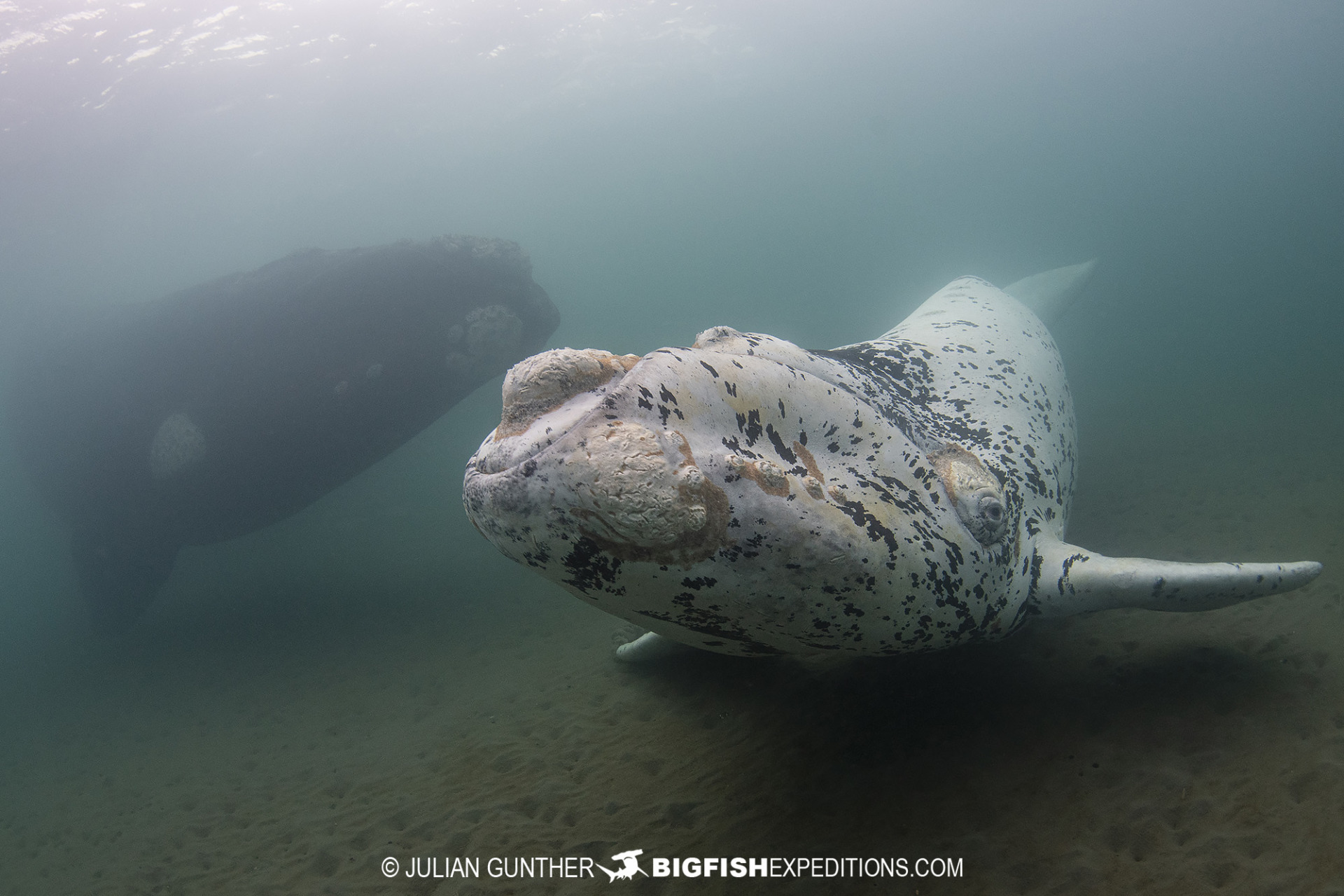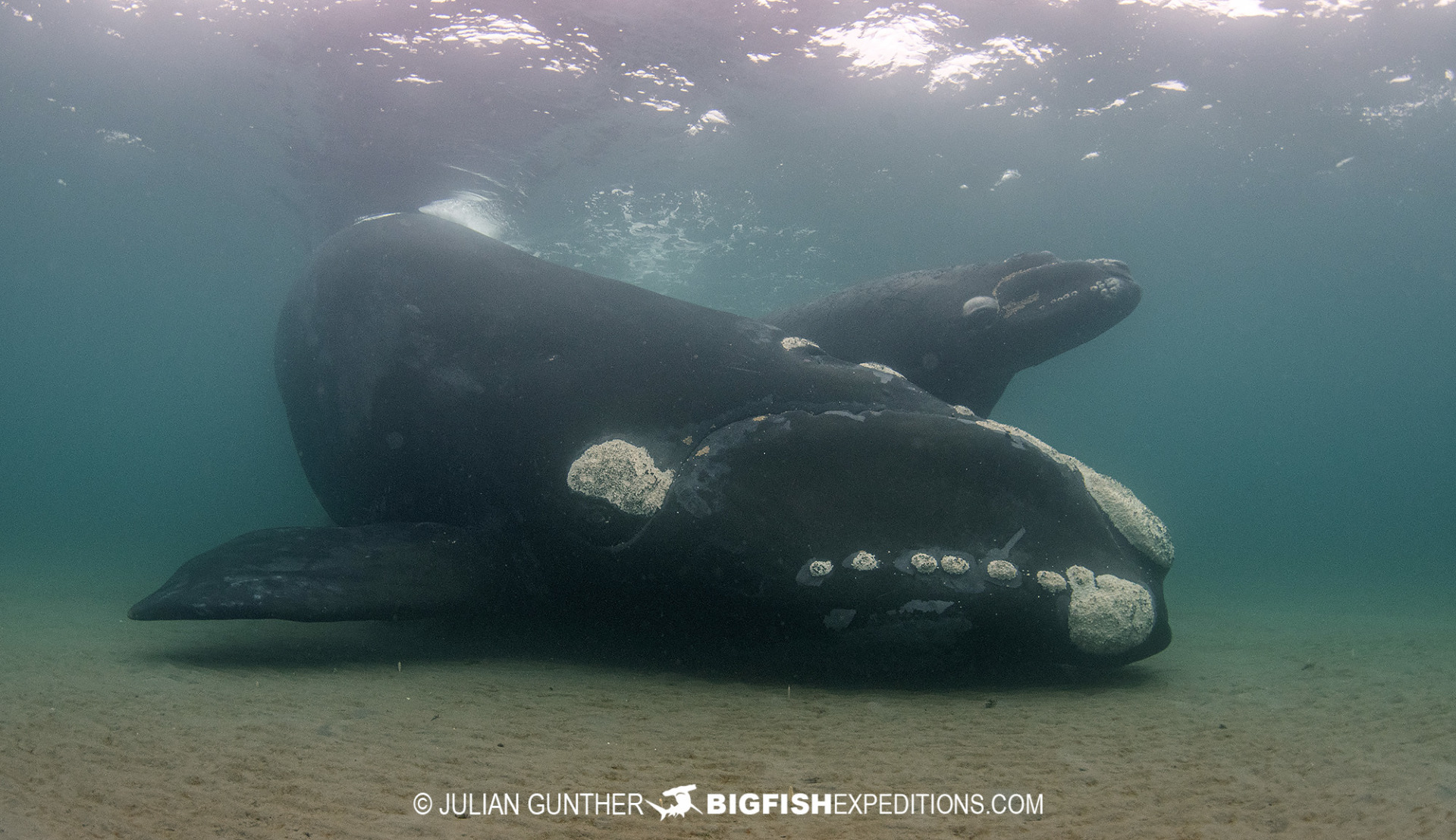
A long anticipated return to Southern Right Whales
Following two years of postponements due to COVID, we finally returned to Argentina in August to dive with charismatic Southern Right Whales and to say this year’s trip exceeded expectations would be one of the most glaring understatements in recent memory. Simply put…W-O-W!
Southern Right Whale Photography Trip Report by BFE Trip Leader Julian Gunther.
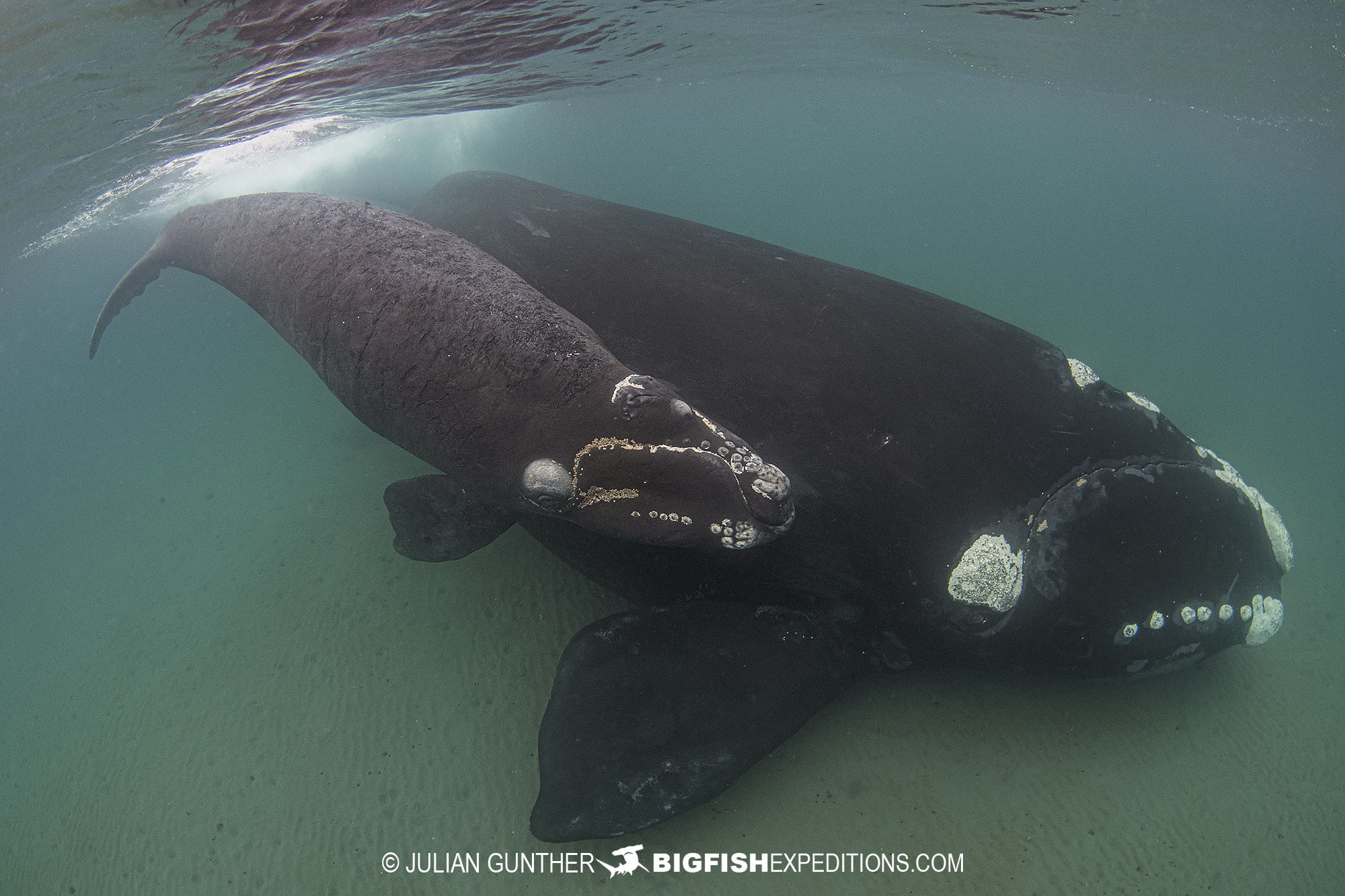
Topside Whales on Day 1
We opted to run this year’s trip in August based on the recommendations of our local guides. The water tends to be slightly cooler than in September, but visibility is more reliable and we were treated with 30-50ft (9-15m) vis each day. Although we did leave port on our first day and almost immediately found numerous whales, we opted to return to port due to concerns from both crew and divers about currents, waves and overall less-than-ideal conditions. No one seemed too disillusioned especially considering the forecast for the rest of the week was showing next-to-no wind or waves.
After returning, we ate a hearty lunch and went with our local guides to Playa Garipe, a nearby beach, whose underwater topography quickly drops to 6ft (2m) or more within near-touching distance of the shorebreak. It was extraordinary to observe 50ft (15m) mothers with their 10ft (4m) calves, at a distance so close that many of us had to change from our cumbersome telephoto lenses to something smaller because they animals were just too close.
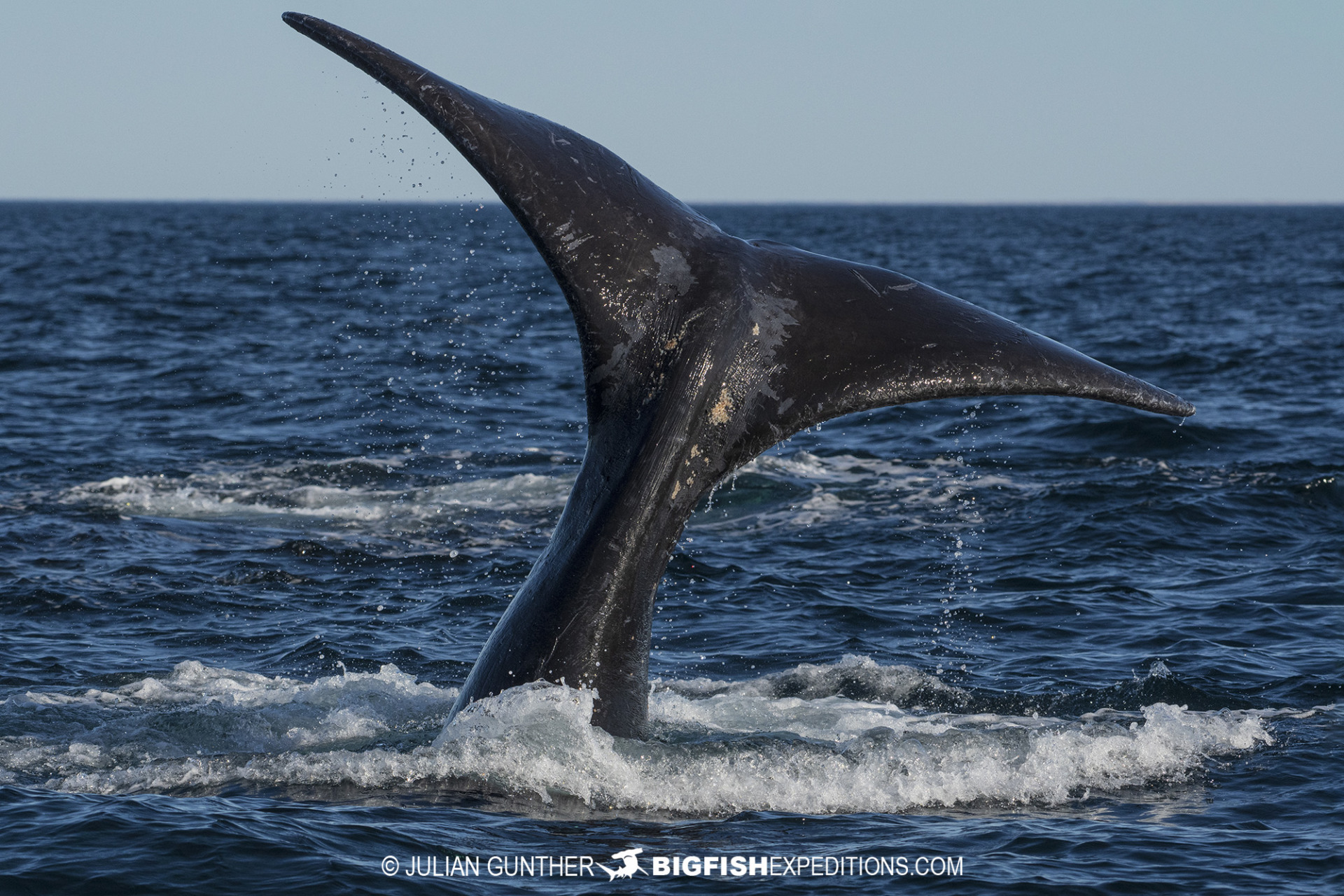
White Whale Calf
The next morning, conditions were calm, exactly as predicted, and as a double-bonus the north wind from the day before had blown out a lot of the suspended particulate and we were treated to some of the best visibility of the season. The whales similarly didn’t disappoint and one of our first visitors was a mother with a rare, white calf. About 1 out of every 100 births results in a white calf, but they are not albinos, they do have black pigmentation and the white will transition to dark as they age. This little one treated us as a curiosity. It would make repeated passes while the mother observed from a close distance. When that pair grew tired and swam off, another mother and calf pair swam over to see what the commotion (us) was about, and that trend repeated itself throughout the day.
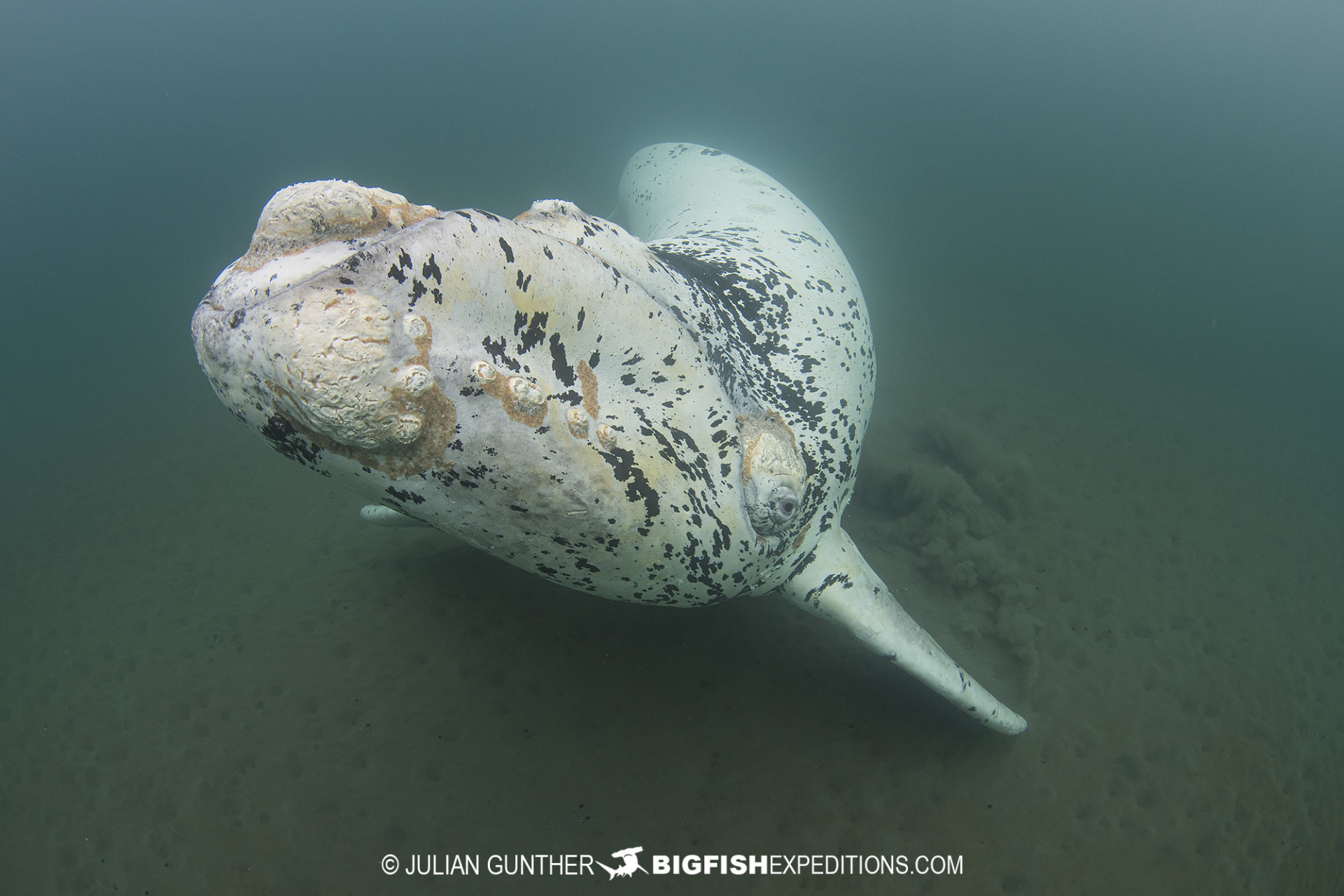
Southern Right Whales in Shallow Water
The whales inhabit such shallow water, that often the adults would stir up the sediment and we would have to wait a couple minutes for it to settle, but that also made for some interesting shots of these gentle giants emerging from silty clouds. In addition, the shallow depth gave divers the opportunity to dive down to shoot the whales resting or silhouetted against the surface. It is an extraordinary experience to be standing on the bottom photographing a calf, only to have the mother come up from your periphery to supervise. The phrase “aye carramba” was utterly loudly and often throughout the day.
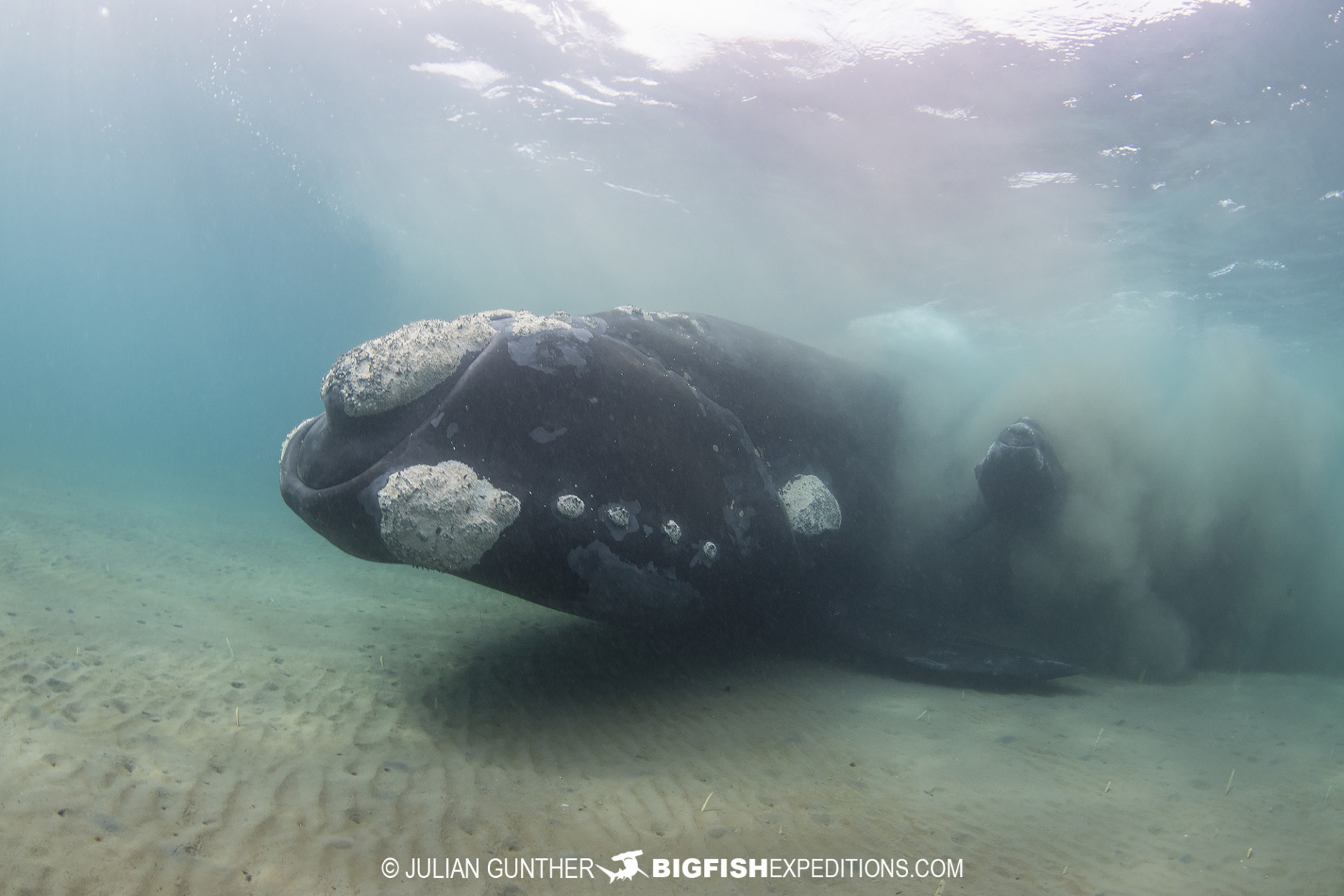
Too Many Whales!
The next several days saw similar conditions both topside and underwater, with near-glass surface conditions and exceptional subsurface visibility. The whales were similarly playful, with pairs of mothers and calves often spending upwards of an hour at a time, circling both boat and divers. On day two we even had encounters with four or more whales, which definitely makes things interesting as you are trying to keep tabs on where the animals are while also trying to get them all in frame. It was a wonderful problem to have. Every so often we were treated to sightings of some of Peninsula Valdes’ other inhabitants, such as Guanacos up on the cliffs or groups of 3-4 Magellanic Penguins returning to their nesting grounds to begin raising the next generation.
On two separate occasions during the week, our divers and crew spotted whales with semi-circle bite marks taken out of their flukes. These were attributed to the resident Orcas that live around Peninsula Valdes. These Orcas are world-famous for beaching themselves when hunting Southern Sea Lions, but are also known to occasionally target Right Whale calves.
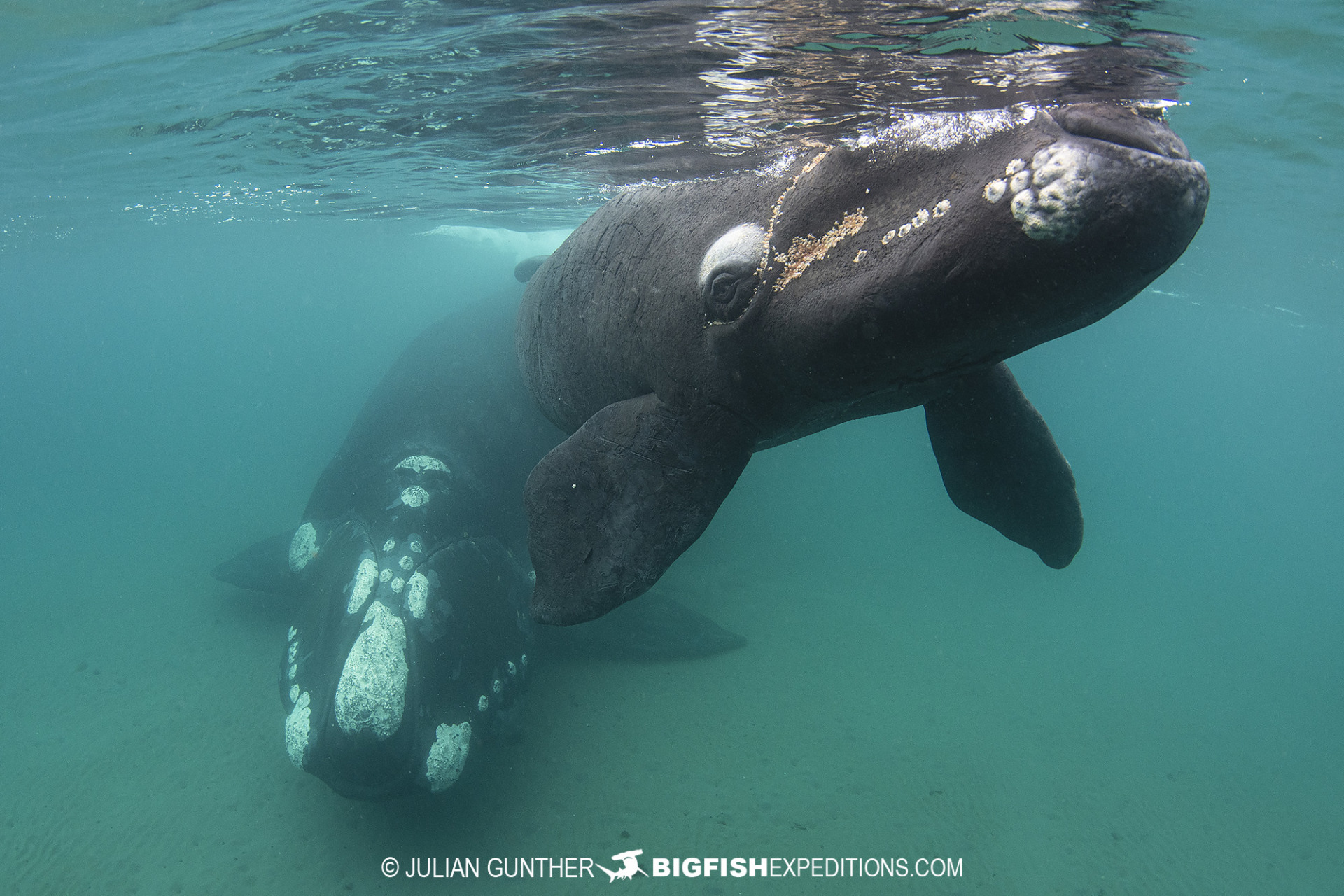
Sea Lions and Shore Birds
Twice a day, when we departed and returned to port, we also passed an outcropping inhabited by sleepy Southern Sea Lions and scores of seabirds, such as Blue-eyed Cormorants, Snowy Sheathbills, and Neotropic Cormorants. Southern Sea Lions are similar in size to their cousins in the northern hemispheres, but the most notable difference, being the male Southern Sea Lions have a much more pronounced “mane” than those present in California or Galapagos Sea Lions.
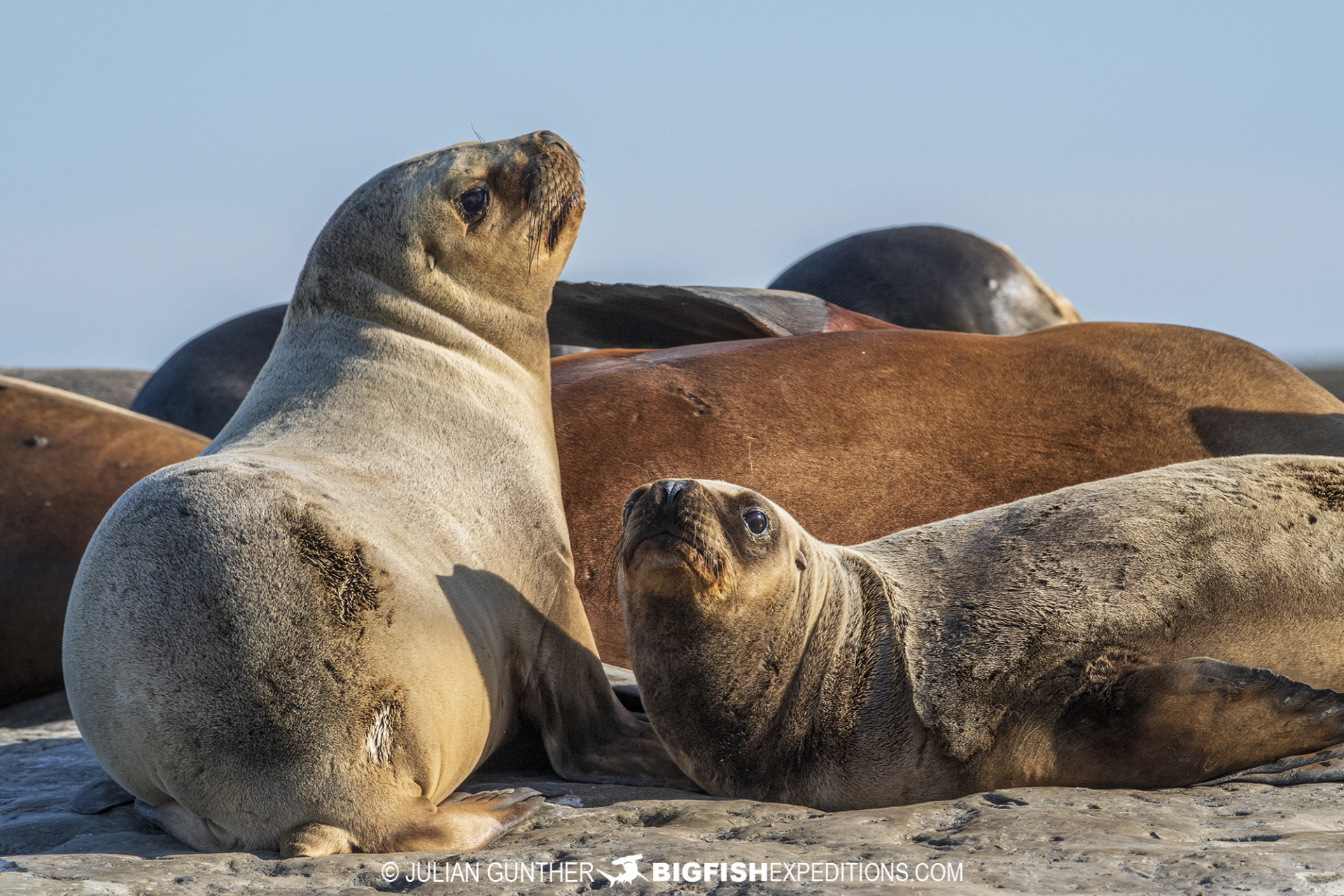
Curious Calf
Our final day started off like the others, but for the second time during the week, we encountered a mother with a rare, white calf, and much like a toddler with a new toy, this calf couldn’t get enough of our divers. The calf spent well over two hours interacting and seemingly posing for our cameras. Even our local crew was amazed at how amiable and inquisitive this little one seemed to be.
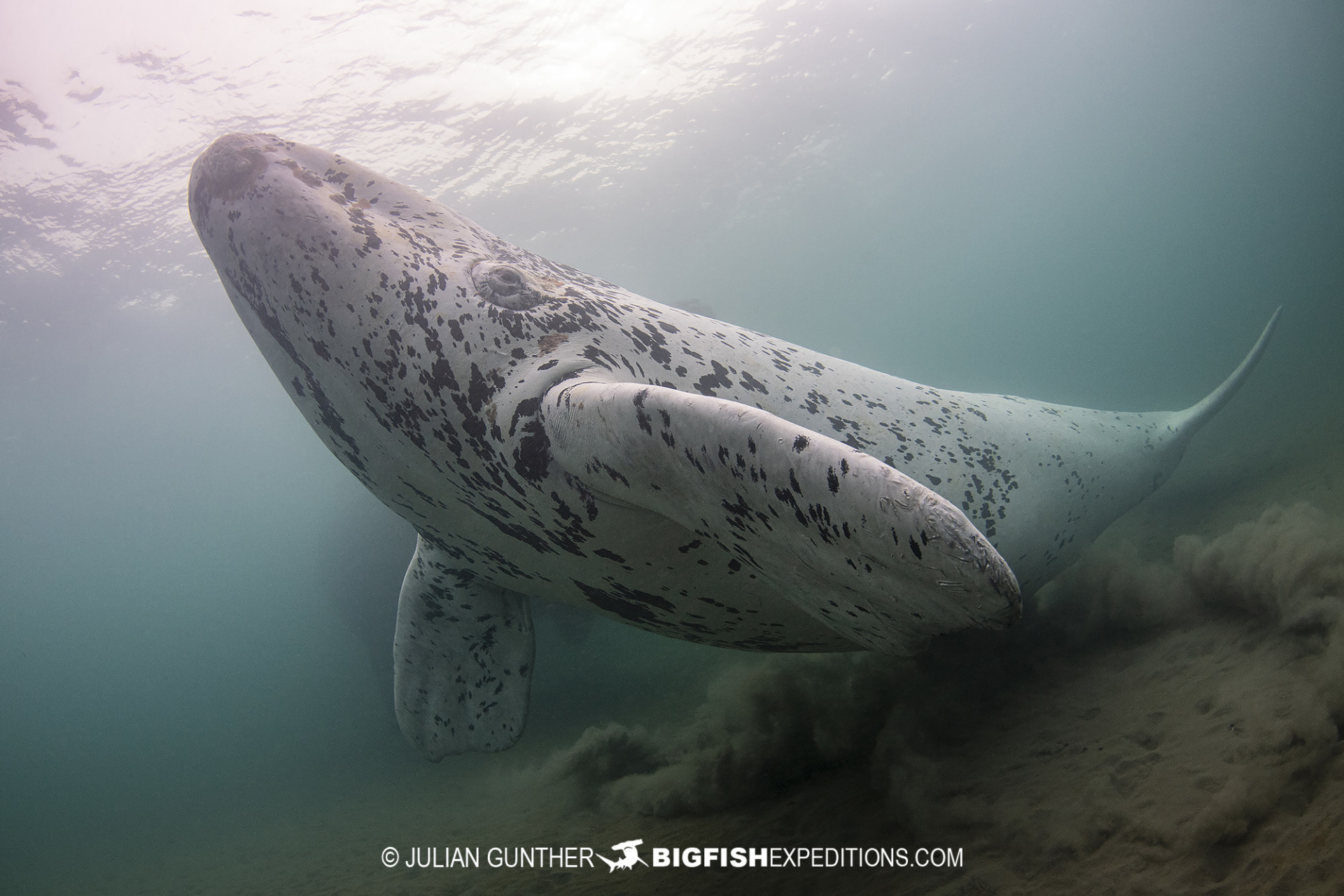
Breaches at Sunset
When the pair had finally had enough, it was similarly time for us to return to shore, as we’d made plans to return in the late afternoon to shoot breaches during sunset. Patagonian sunsets are something special, as the sky lights up in radiant hues of orange, red and violet, and presents opportunities to get some remarkable shots of silhouetted breaches. Once again, the whales did not disappoint, as everyone got photos and videos, but the most memorable part was at the last light of day, as, without prompting, everyone seemingly put down their cameras to just revel in the experience.
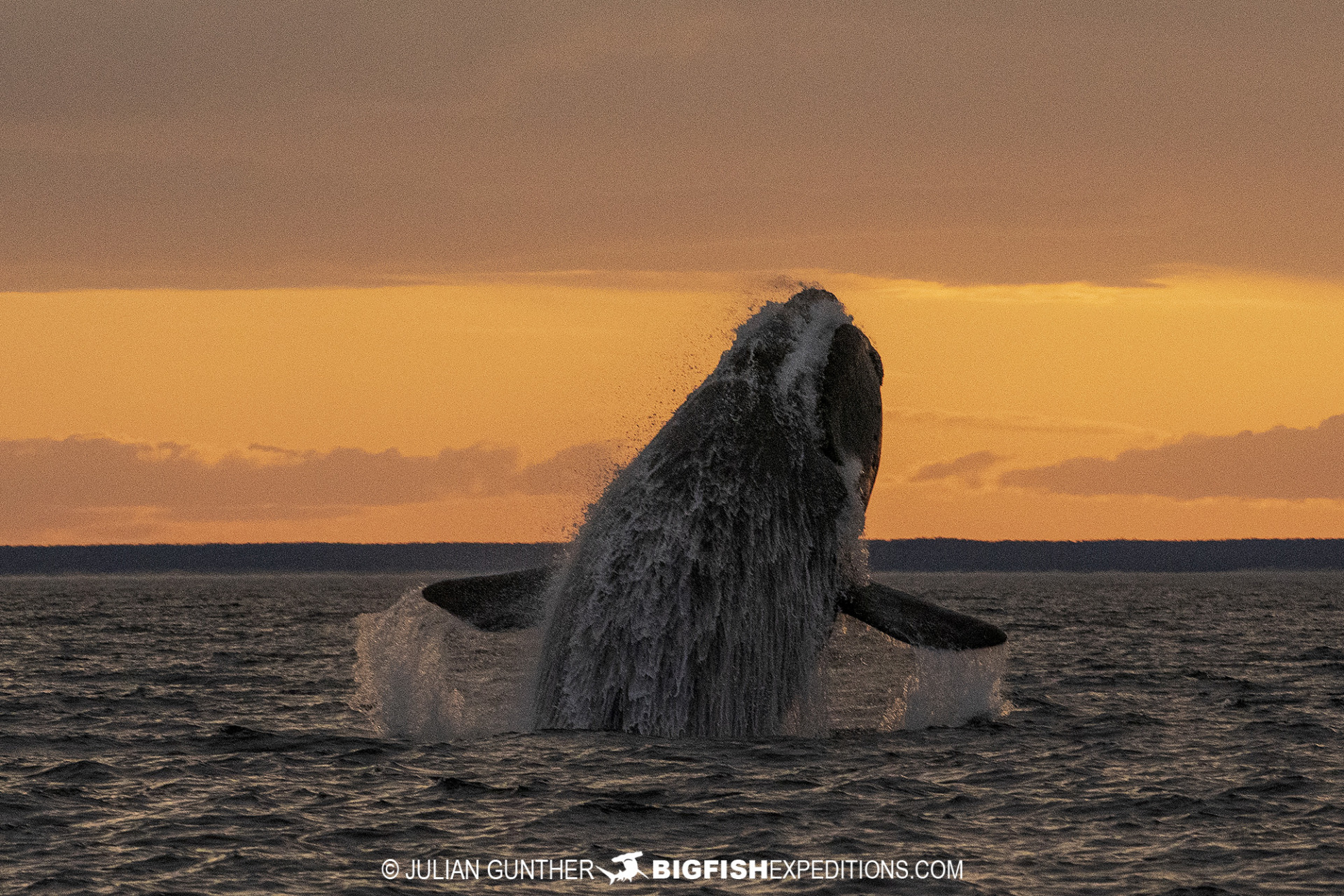
Good times in Peninsula Valdez
As we returned to shore, our guides confirmed they would be having a barbecue that evening and we were all invited. The table was overflowing with meats, breads, cheeses, and wine, and a refrigerator filled with cold beer. The discussion centered around the whales, the history of the local, and inevitably showing some photos from the week.
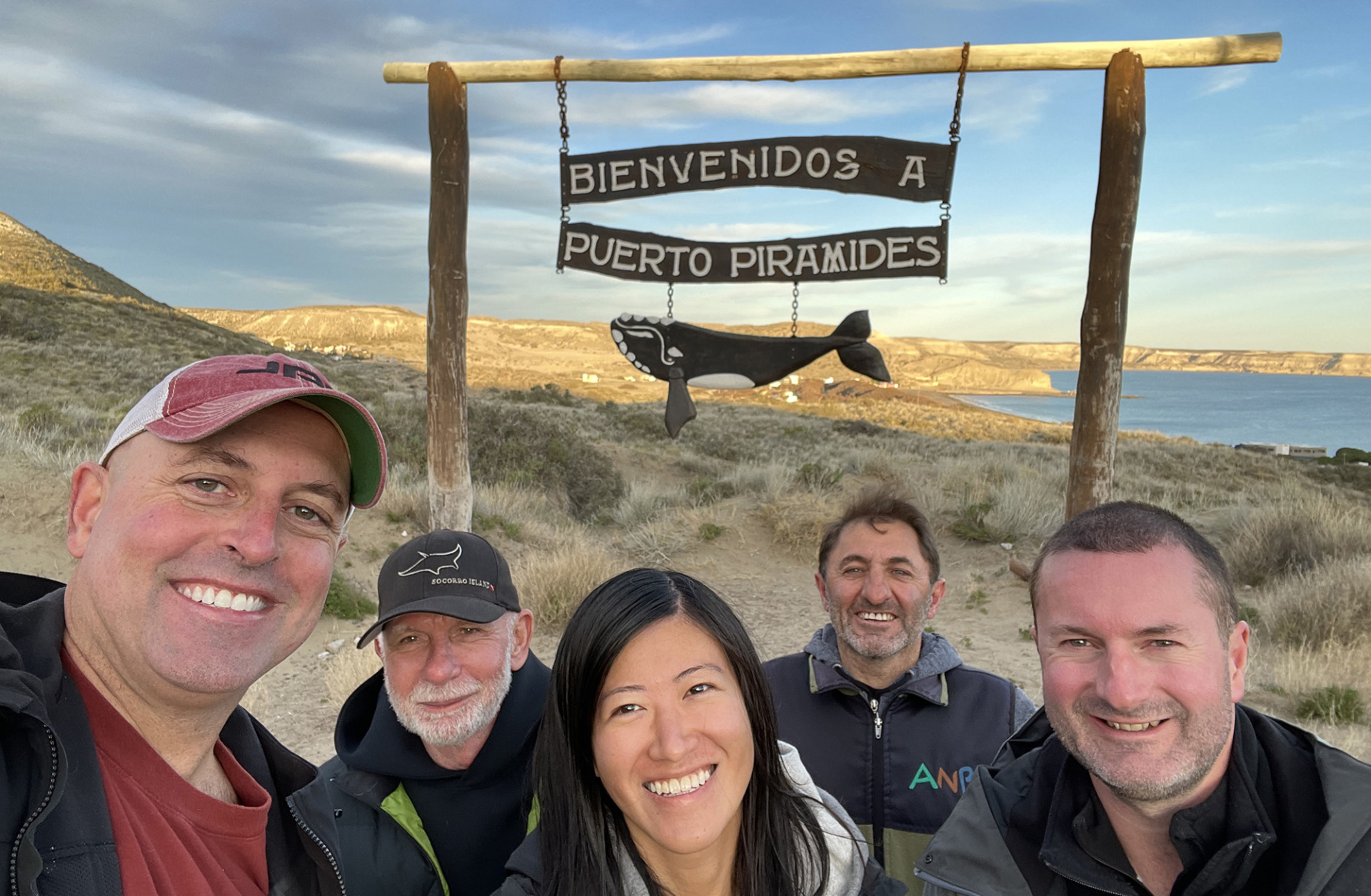
Join us in Peninsula Valdez to Photograph Southern Right Whales
We take a small group of just five avid whale photographers on our Southern Right Whale trips. 2023 is full already, but we have a little room on our 2024 trip you would like to join us. We would love to show you these incredible creatures but please read the following:
Argentina is one of the few places in the world where you can have the opportunity to photograph this gregarious species of whale, but there are several prerequisites in order to join the trip. All underwater activity is done via a special photographer’s permit issued by the Argentine government, so all guests must have professional-level cameras (SLR, Full-frame mirrorless) in full-sized underwater housings. The authorities also require guests to have photography credentials, such as a website, online portfolio, publication history, or similar proof-of-work. Strong open-water swimming or snorkeling skills are also a must, as photographers will need to be self-aware of their positioning in the water and have the ability to maintain a respectable distance from the whales.
If this sounds like your trip, we look forward to hearing from you: Southern Right Whales Underwater Photography Expedition
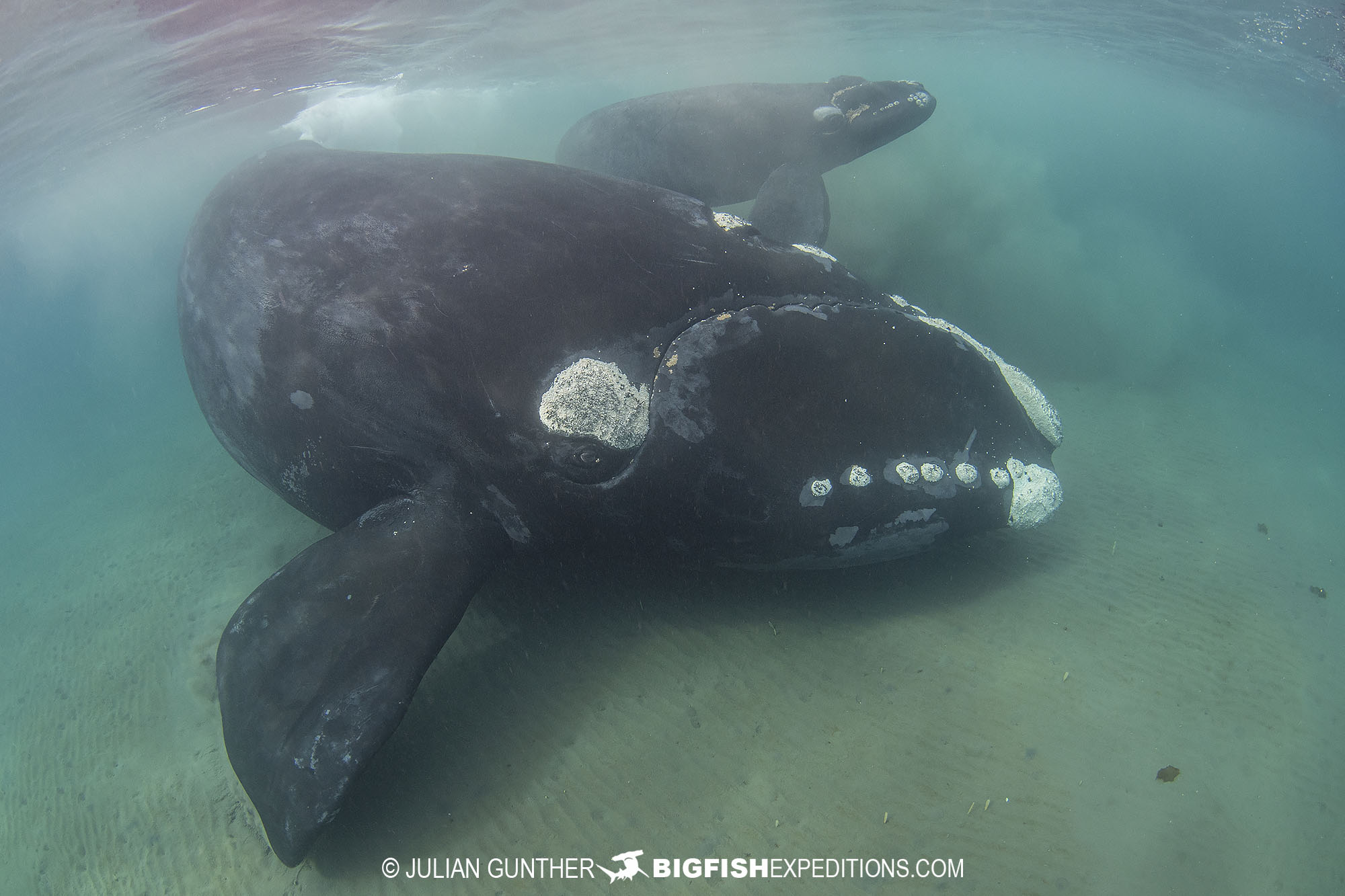
White Whale Approach
A short video of that amazing white whale calf!
